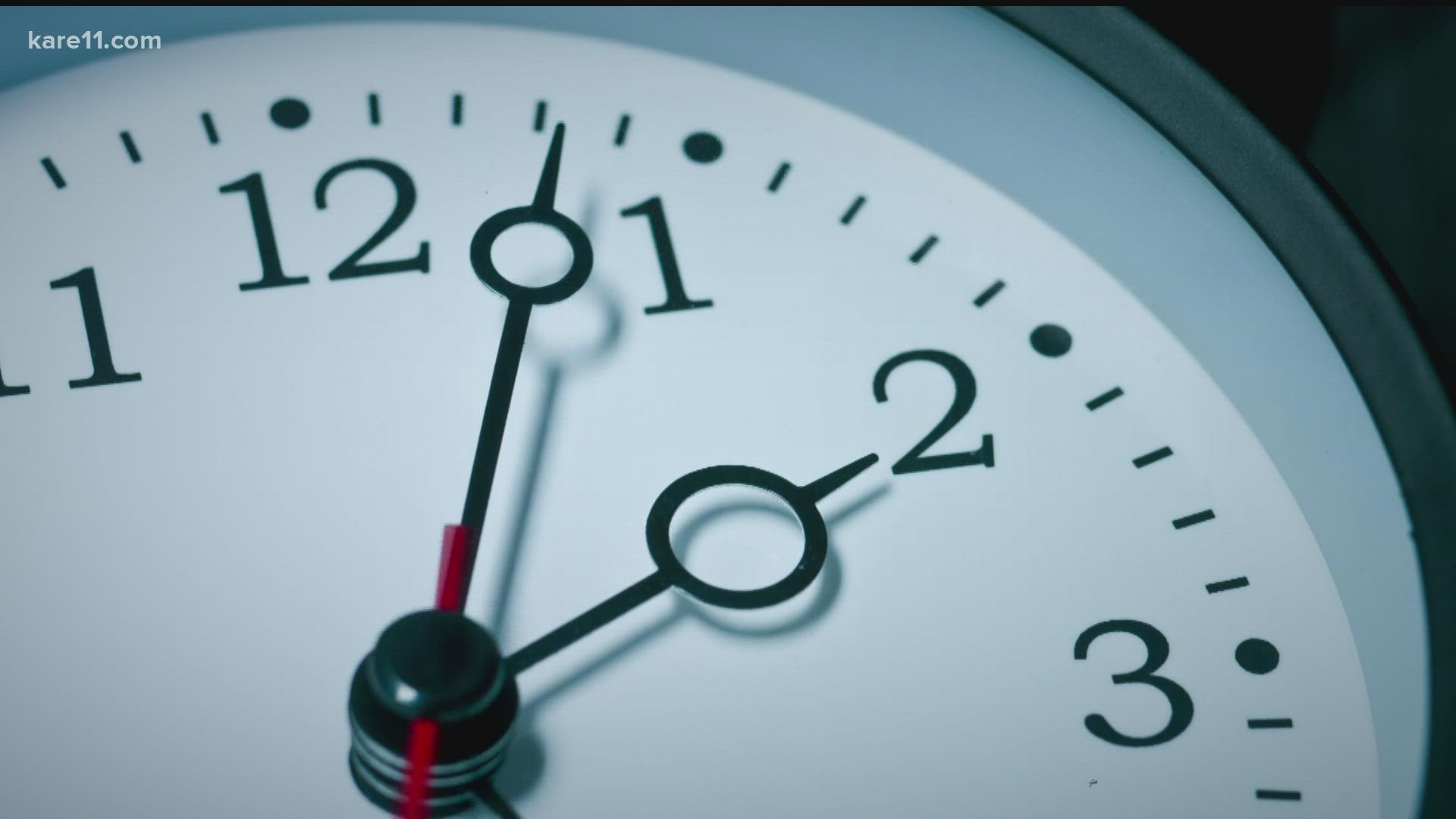MINNESOTA, USA — On March 15, the Senate unanimously passed the Sunshine Protection Act, which would make daylight saving time permanent across the United States.
The bill still needs approval in the U.S. House of Representatives before heading to the White House for President Biden's signature, and even if it does become law, permanent daylight saving time wouldn't go into effect until November 2023.
So what would locking the clock look like in Minnesota?
The impact would come during the colder months, when Minnesota would otherwise observes Central Standard Time.
Based on 2022 data for the Twin Cities, the biggest impacts would be seen surrounding the winter solstice when days are the shortest.
The welcome change is that the latest sunset would now be at 5:31 p.m. As it currently stands, the sun sets at 4:31 p.m. from Dec. 4-15.
But on the flip side, we would lose morning sun. Instead of coming up at 7:51 a.m. in late December and early January, the sun wouldn’t rise until an hour later. This means from Dec. 30 to Jan. 5, the sun up would come at 8:51 a.m.
In my opinion, lifestyle plays a huge role in how individuals feel about permanently adopting daylight saving time. Parents, myself included, might not be too happy about morning bus stops in the dark. I already worry about safety at the bus stop.
But it does sound mighty nice to have at least a little bit of daylight after school and work to get in some outside playtime.
More WeatherMinds from KARE 11
Watch more on our YouTube playlist:


